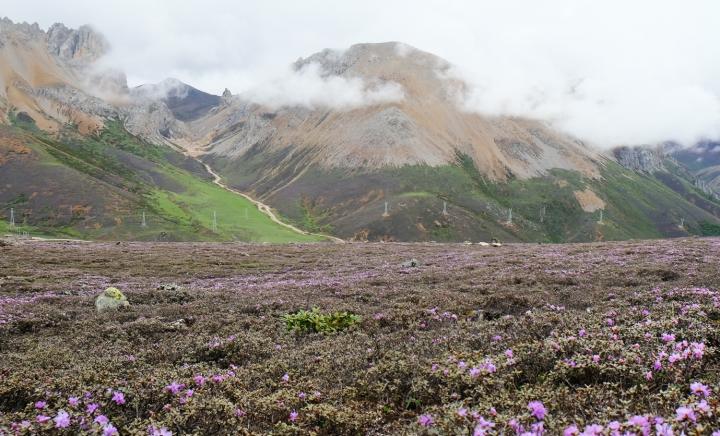It has continuously existed far longer than any other alpine flora on Earth, which can infer how modern biotas have been shaped by past geological and climatic events.
The researchers from connected the dynamic tectonic and climatological history of the region to the biological processes that have driven the development of its alpine biota. Then they focused on whether phylogenetic estimates of alpine ancestry are temporally and spatially consistent with geological evidence of alpine habitat availability. By using a joint model of biome occupation, evolution of geographic range, and lineage diversification, they analyzed time-calibrated phylogenies of 18 groups of flowering plants.
The results show that alpine flora had emerged in the the Hengduan Mountains region by the early Oligocene, over 28 million years. This is much earlier than estimated origins of others. The scholars also tested whether major tectonic events in the Qinghai-Tibet Plateau, Himalaya, and Hengduan Mountains left discernible imprints on the tempo and mode of alpine biotic assembly.

Rhododendron nivale subsp. boreale Shrubland in the Qinghai- Tibet Plateau (QTP), Himalaya, and Hengduan Mountains (THH). Image: Image by Ding Wenna
They found that overall rates of in situ alpine speciation began to increase from the early Miocene and were jointly driven by the uplift of Himalaya and the Hengduan Mountains as well as intensification of the Asian monsoon. The results, derived from analyses of time-scaled molecular phylogenies and not in situ fossil evidence of alpine ancestry, are nevertheless temporally consistent with the latest geological evidence that active orogeny associated with widespread crustal shortening and thickening established highlands from eastern Tibet to the Hengduan Mountains by the end of the Eocene, according to Dng Wenna, first author of the study.





Comments